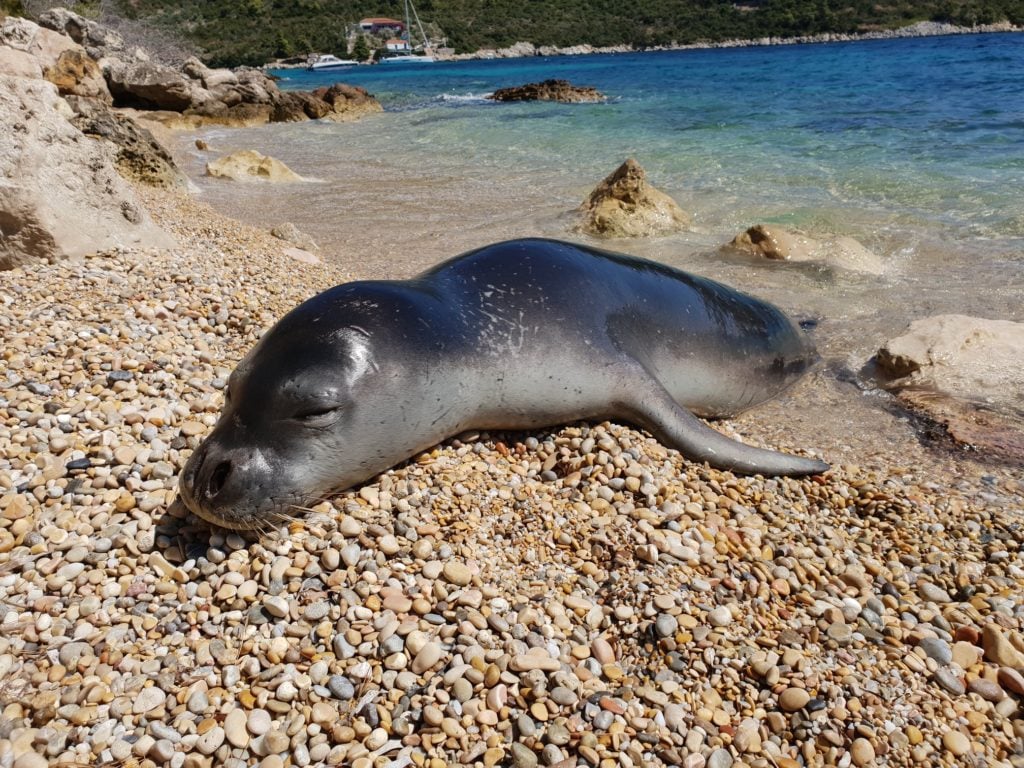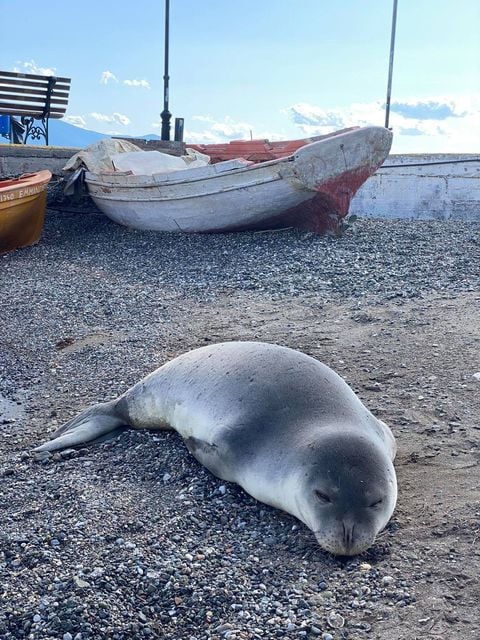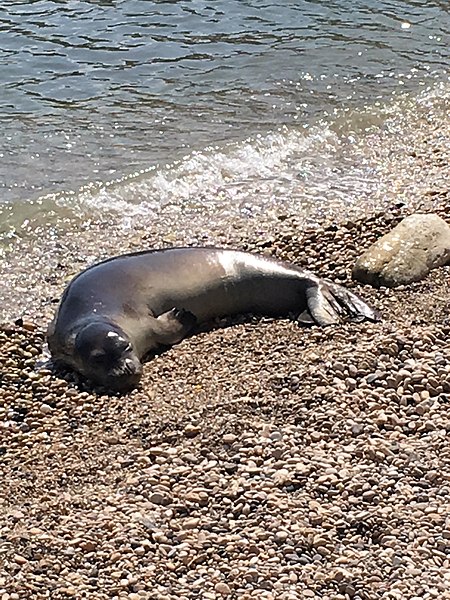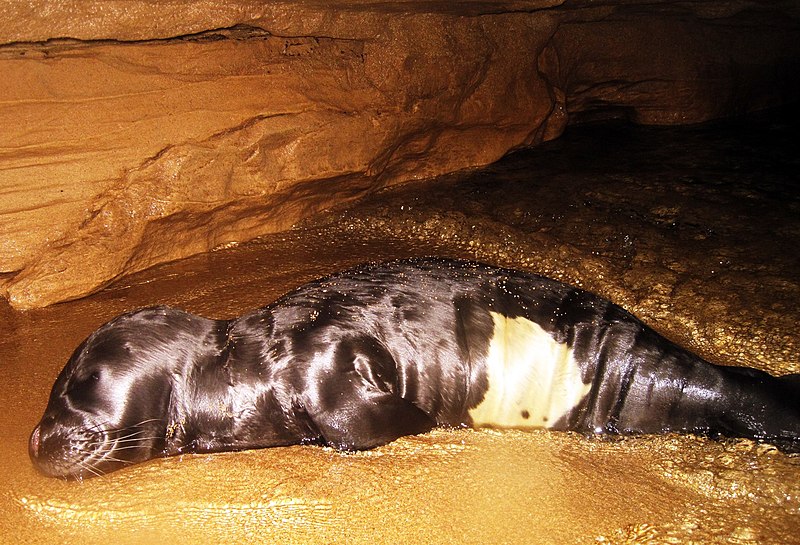
In February of 2016, a rare feat in environmental protection took place when the Hellenic Society for the Study & Protection of the Mediterranean Monk Seal (MOm) announced that the seal had made an unexpected comeback in the Aegean, with its population recovering to the point where it was no longer considered “critically endangered.”
The monk seal dropped down one category on the IUCN Red List of Threatened Species, from “critically endangered” to “endangered.”
And the beloved seal is holding its own, thriving in the protected waters of the National Marine Park of Alonnisos and the Northern Sporades.

Mediterranean Monk Seal almost hunted to extinction in the past
Ever since that remarkable milestone was met, the organization has done its utmost to keep the Monachus monachus seals protected in the seas off Greece, succeeding beyond its wildest dreams.
With an office in Patitiri on the Northern Sporades island of Alonnisos, MOm is able to keep a close eye on the National Marine Park of Alonnisos and the Northern Sporades, which stretches between Alonnisos and nearby smaller islands.
Established in 1992, it was the first marine park established in Greece by Presidential Decree.

Although it is a marine sanctuary for the Monachus Monachus and other wildlife, boaters and other visitors are allowed to visit its waters as long as they comply with regulations in place there.
It is currently the largest protected marine area in Europe, at approximately 2,200 square kilometers (849 square miles). Within its boundaries lie the Underwater Archaeological Park of Peristera, an islet off Alonissos, which protects one of the most spectacular shipwrecks ever found.
Even portrayed on Ancient Greek vases throughout antiquity, the seal has been a part of the seas around Greece since time immemorial. But they were almost hunted to extinction by the Romans for their fur and oil.
Ancient Greeks treasured the seals, even believing that they were under the protection of the gods Poseidon and Apollo because of their love for the sea and their seeming worship of the sun.
There are many ancient Greek and Roman literary works indicating that monk seals lived in large numbers along the shores of the Mediterranean. References to seal are found in the works of Homer, Aristophanes and Plutarch, Ovidius and Virgil.
They received their first scientific mention by the scientist, philosopher and historian Aristotle, who is also considered the godfather of zoology, when he described them in his work “History of Animals.”

Monk seals are part of the group of mammals called Pinnipedia, which includes all the species of seals, sea lions and walrus living in seas all around the world. They belong to the family of Phocidae, also known as the “true” seals.
The first seals appeared on the face of the earth approximately 20 million years ago. As pinnipeds, they have flippers instead of legs which are well adapted to the needs of a life that is spent for the most part in the sea.
The Mediterranean monk seal, Monachus monachus, is the rarest of the 33 extant seal species on Earth. As the most endangered marine mammal in Europe, it is one of the most critically endangered animals anywhere on the globe at the moment.
There are only 600 individual animals that are estimated to live currently around the Mediterranean — and almost half of this population lives in the territorial waters of Greece.

Adult seals can reach a length of 2.8 meters (9 feet) long and weigh as much as 300 kg (661 pounds). They have small acoustic holes for ears and sport long, smooth vibrissae, or whiskers, which help them sense their environment.
Their fur is usually black, brown or silver-gray on their backs and lighter on their bellies.

Adult male Mediterranean monk seals are slightly larger and heavier than adult females of the species, unlike sea lions, to whom they are related, which have enormous differences between the sexes. Adult males have black backs and have a distinct white patch on their bellies, and females are brownish/silver-gray on the back and are somewhat lighter color on their undersides.
Newborn Monachus monachus pups are approximately 1 meter (3 feet) long at birth and weigh 15 – 18 kg (33 pounds). Monk seal pups all have a black coat with a distinctive white or yellowish patch on the belly before maturation.
This patch disappears after the first molt, but comes back for males when they reach the age of sexual maturity, approximately 5-6 years. Monk seals can live up to 30 years in the wild.
The pupping season in Greece takes place from August to December, with a peak in the number of births occurring during the second week of October.
While a large part of their diet consists of octopi, which are very abundant in the Sporades, the seals can travel large distances in a very short time, with one seal observed swimming 150 nautical miles over three months’ time. When in search of their prey, Monachus monachus can dive down to an astounding 200 meters (656 feet) even at a very young age.
All seals have a thick layer of blubber that acts as an insulator, which helps keep their body temperature constant, both in water and on land. Although, as can clearly be seen, they do love a little sunbathing — actually, a lot of sunbathing — as they haul up onto warm rocks or sand for a little extra warmth whenever they can.
Mediterranean Monk Seal must have safe, secure access to land
Safe access to land is important for the Monk seal as it is there that the mothers give birth to their single pup every year, from the month of August to December. The preferred habitat for pupping, and protection at nighttime, are the many secluded sea caves found along remote stretches of coastline all around the Mediterranean.
Such caves usually have one or more open-air or underwater entrances which also feature a main resting area with a beach or flat rock. Young monk seal pups spend a lot of time in the first months of their lives on the beach or in the water inside the cave itself.
MOm notes that the very survival of the species depends on the availability of such pupping caves — which are a common feature in all of the islands of the Sporades.
Monk seals are so emblematic of the Mediterranean that they were depicted on coins dating back to the 6th century B.C. in the ancient town of Phocaea, in present-day Turkey — which was itself named after the species.
Showing just how beloved the seals have been throughout history, an archeological excavation on the Greek island of Rhodes in 1999 uncovered a burial site in which members of a well-off family were buried with great ceremony next to a monk seal — perhaps a treasured family pet.
See all the latest news from Greece and the world at Greekreporter.com. Contact our newsroom to report an update or send your story, photos and videos. Follow GR on Google News and subscribe here to our daily email!



